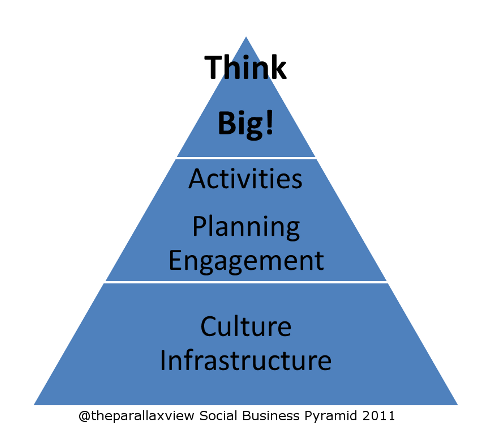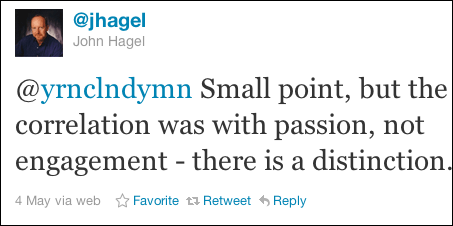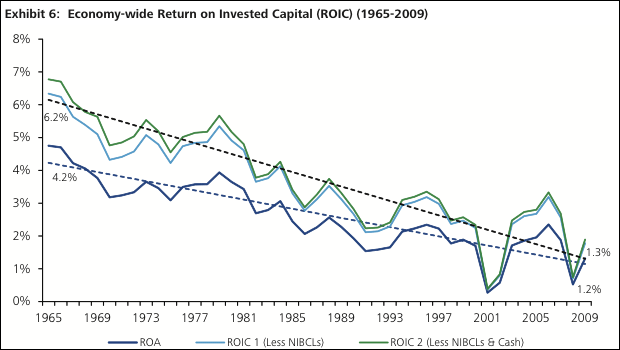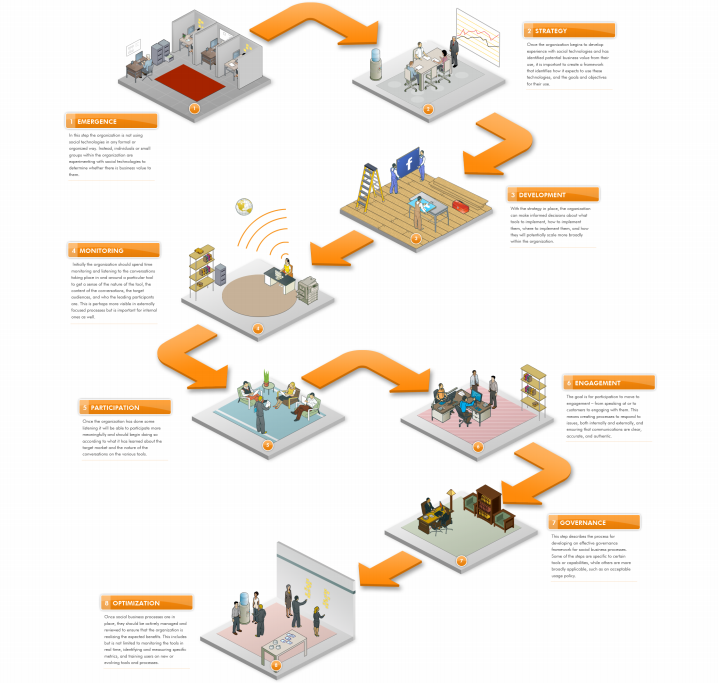One of the things I’m quite often asked for is the answer to ‘what makes a social business / Enterprise 2.0 project a success?’ What the questioner is after, is often at heart what they need to do to make their project a success. In many ways there’s no definitive answer here as each social project needs to be approached, managed, evangelised and generally nurtured into being in different ways. I’m seeing this in no small way on my current engagement where I’m helping do all the above to no less than five fully-loaded Jive sites.
The diversity of this engagement is stimulating and it has also gotten me thinking about what the success factors might be to really make things rock. Or put another way: what do you really need in place and what do you need to do, to make a social business project a success?
What follows is an outline of some of these elements. One caveat: I’ve worked on too many projects where one or more of the fundamentals are not in place and so while such an absence doesn’t preclude success, it does make it that more harder to achieve. So the motto here is, don’t lose heart if you don’t have all of the below, they’re not all essential. And excuse the overlaps…
Infrastructure
1) Use the right social platform. This will vary from environment to environment but select the one that works best for your existing architecture and processes, but also one that can help reinvent both. Gartner’s Magic Quadrant and Forrester’s Wave are good enough places to start to review the options. And don’t just go along with what Comms/IT/Marketing (delete as applicable) say is best – do your homework.
2) Pray for a good network. If your employees aren’t all online, with decent PCs and good connections then your work is going to be harder. Not necessarily a bad thing, so long as you’ve innovative minds on your side.
3) Fully Funded. Most projects I’ve worked on have been strapped for cash. Having the budgets in place to support the project is very helpful.
4) Fully Supported. It’s a lot easier when IT support the project and buy into the social idea. (See below too).
Culture
1) Leadership. Get your leaders on board – get visible support, get them seen using it and spelling out where Social fits into the scheme of things.
2) Middle Managers. Get your middle managers on board. This is vital – they can and will spanner the entire project!
3) Ducks in a row. If Comms don’t already own it, make sure they’re fully synched in. Ditto with HR and Marketing. Get the 4 ducks of Comms, IT, HR and Marketing in a row.
4) Digital People. A digitally savvy, socially aware workforce is a big plus – even if they’re currently disengaged and fed up with the company as a whole.
Engagement
1) Engagement Strategy. Decide on how to engage with people. Map it out.
2) Dialogue. Always aim for conversation – this is 2-way
3) Business. Align the social engagement strategy to the business strategy – focus on the what matters most targets & aims.
4) Pleasure Principle. Doing business doesn’t have to be painful, leverage the fun side of social.
Planning
1) Share the ideas. Have a clear & shared plan.
2) Plan for Success. Decide what success looks like up front.
3) Measure it! Decide on how to measure success up front.
4) Milestones. Create aims and milestones.
5) Monitor it. Review at regular intervals, listen to what people are saying, ask them what they think.
Leaders, Champions & Users
1) Tell your leaders. Get your leadership team on board
2) Find your friends. Identify champions, get them promoting social
3) Create a Champions Group. Create a social Group to support your champions
4) Create a Comms Plan for your Users: who, where, when & with what channels
5) Training. Decide on how your audience will be trained & supported
Activities
1) Activities. Decide on a series of engaging events, projects & initiatives.
2) Gamification. Make the activities game-based, for example, blogger of the month, best video, most creative Group.
3) Challenge. Think of ways to challenge the users to channel their creativity.
4) Timeline. Create a roadmap of the activities with a supporting comms plan.
Make it Personal
1) People. Feature people at al times – a picture of one person is worth a 1000 docs.
2) Video. Moving pictures is what makes social, really social, bringing it to life – people like videos, use them often and widely.
3) Success. Celebrate success, show people what people & teams are doing.
Make it Practical
1) Day work. Provide practical examples of how social can be used in everyday work
2) Crowd Source. Show how other people are using social tools in their daily work
3) Structure. If there’s a best practice, make a structure or template that others can use
4) Create User Cases. For example, Projects, Meetings & Conferences, Pitches, Multi-Location Teams etc
Make it Aspirational
Think Big!
If you don’t think big, don’t worry – you teams may do it for you…
Pulling it all together
As I think pictorially, this is how it all looks as a diagram. Get the foundations in place. Work from that. Always think outside the structure by thinking beyond what’s really possible…







